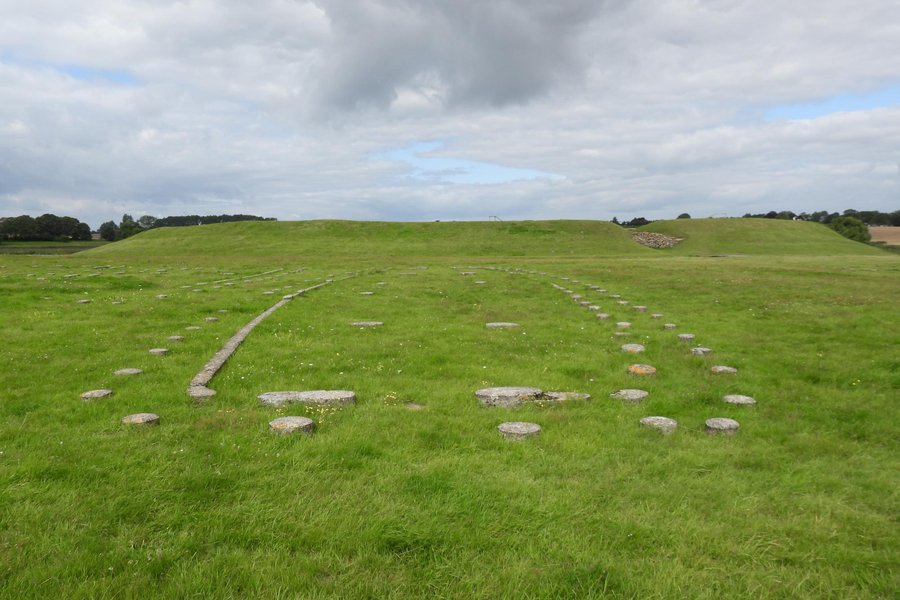
There may have been a time when viking sites were underrepresented on the world heritage list but by now I think they are already overrepresented. Firstly the viking period is a rather limited era and has already 6 sites or more on the list. I haven't visited all of them but I have visited Jelling and Hedeby (and St. Kilda but there the Viking connections is not central). While I found both visits worthwhile and interesting, in both there is very little to see and they need a lot of explanation and imagination and I am not so sure at all that they really need to be on the list.
The other important viking places are Birka where seems vey little original to see but a few tumuli, and also the sites on Greenland and L'Anse aux meadows are more interesting about the early exploration of the western hemisphere than about their scant remains.
So there seems no need to add another site that doesn't add much and is possibly even less interesting. When I travelled around Denmark I felt that visiting Jelling should be suffice for viking sites since it is the most important viking site and already very modest as a WHS. But on the way from Kopenhagen and the eastern island the Jutland I travelled through the nice city of Odense where I stayed for one night to explore the old town and the Andersen connection (I found the new museum/park about him less interesting though). Of course I made the small detour to Nonnebacken. But there is really nothing to see but a small hill so I do not understand at all why this would be included in this already very weak nomination. Perhaps they think they may make some archeological discoveries in the future similar to the arguments they used for the nomination of the similarly weak Roman Limes sites. Sometimes you get the impression they try to turn the plainness of a site in an argument for its future archeological potential.
Nonnebacken is probably the weakest of the five inscribed sites but when you look at the other sites then you finde nothing more but a round wall. If there is anything else visible it is reconstructed. Is that really so important? After all these sites are not even so old: They are only about one thousand years old. Shouldn't there rather be an inscription of bronze age and iron age hill forts? Especially the UK has hundreds of them, all of them are much older than the viking fortresses. Many of them have also mainly earth walls left but they are much bigger and impressive. Among them Maiden Castle, Old Oswestry or British Camp. But there are also hill forts that have a surprising amount of walls and house foundations left: on my last trip to the UK I found a hike to Tre'r Ceiri Hillfort extremely impressive: the walls there are massive: several meters high and think and there are dozens of foundations of roundhouses left. A selections of these hill forts would be a much more interesting addition in my opinion. In Germany the Heuneburg is another early Celtic castle of huge importance.
I you visit the wonderful National Museum in Copenhagen you find not only a great collection of viking finds that give a good impression of their artistic skills but also stunning finds of much earlier bronze age culture that is hardly known: among them the wonderful Trundholm sun chariot from around 1400 B.C., the strange Veksø helmets, around 900 B.C. or the collection of lures, a fascinating bronze age instrument. More great finds from that period are shown in the wonderful Moesgard museum south of Aarhus: objects of great skill and symbolic power. This culture is at least as interesting as the vikings and not represented on the list.
If there really should be an addition with another viking site I think it should be the two viking settlements on the Orkneys and the Shetlands where you find the only examples of the complete foundations of a viking settlement anywhere (except perhaps in Greenland) because there they had to build there houses in stone for the lack of wood: the settlement on orkney is on the wonderful Brough of Birsay which offers also older settlements and a splendid hike and the settlement in the Shetlands is part of the Jarlshof which has been on the tentative list for a long time and should have been inscribed long ago.
Comments
No comments yet.
